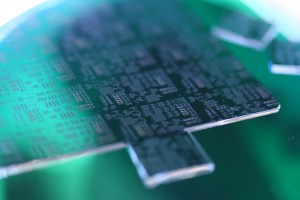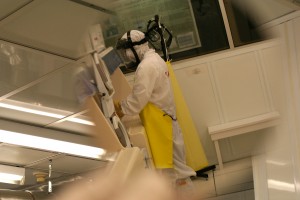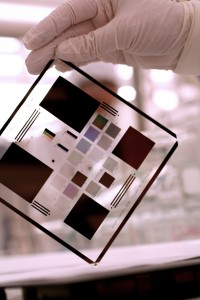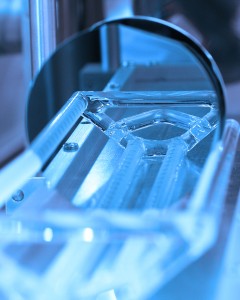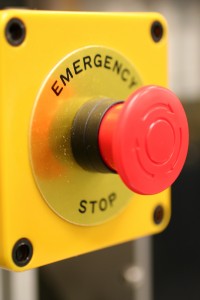Etching is used in microfabrication to chemically (or physically) remove layers from the surface of a wafer during manufacturing. Etching is a critically important process module, and every wafer undergoes many etching steps before it is complete.
For many etch steps, part of the wafer is protected from the etchant by a “masking” material which resists etching. In some cases, the masking material is a photoresist which has been patterned using photolithography. Other situations require a more durable mask, such as silicon nitride.
The two fundamental types of etchants are liquid-phase (“wet”) and plasma-phase (“dry”). Each of these exists in several varieties.
The first etching processes used liquid-phase (“wet”) etchants. The wafer can be immersed in a bath of etchant, which must be agitated to achieve good process control. For instance, buffered hydrofluoric acid (BHF) is used commonly to etch silicon dioxide over a silicon substrate.
Different specialised etchants can be used to characterise the surface etched.
In this section
- Chemical Etch
Wet etchants are usually isotropic, which leads to large bias when etching thick films. They also require the disposal of large amounts of toxic… - Plasma Etch
Modern VLSI processes avoid wet etching, and use plasma etching instead. Plasma etchers can operate in several modes by adjusting the parameters of the plasma. Ordinary plasma etching operates between…

